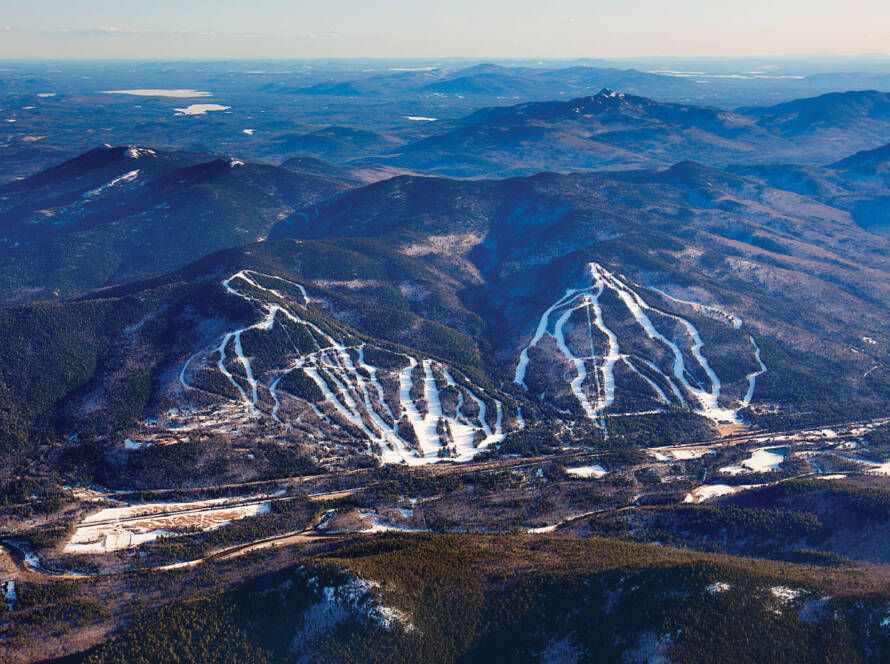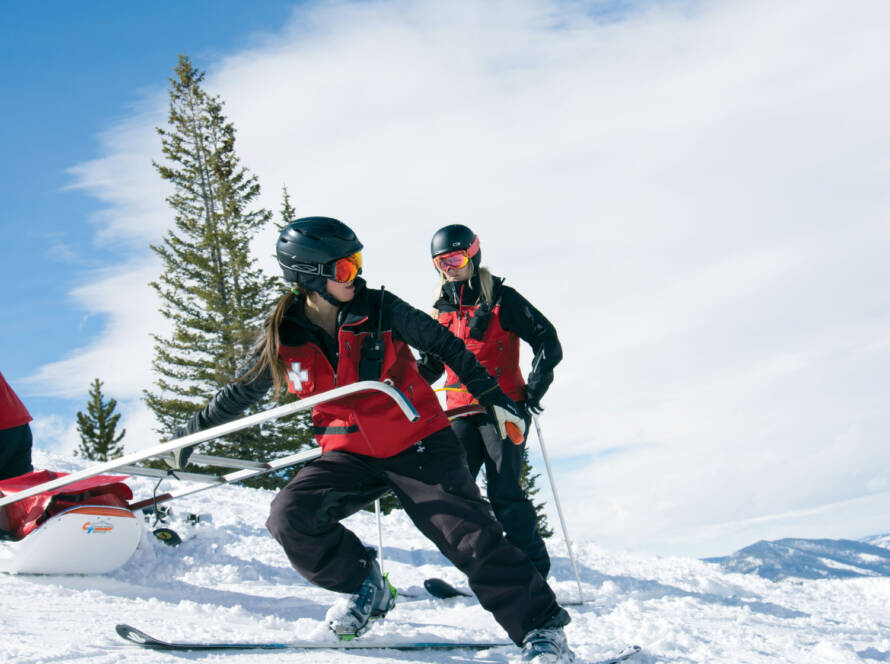By Shel Zolkewich
It’s estimated that snow sport tourism dumps over $20 billion into the U.S. economy on an annual basis (according to researchers at the University of New Hampshire and Colorado State University).
The combined economic spin-off of travel, accommodations, dining and entertainment – along with traditional lift ticket purchases – makes ski resorts some of the most popular vacation destinations across the nation.
In 1936, Union-Pacific Railroad chairperson Averell Harriman had a dream. He wanted to find a place to create a ski resort like the ones he had experienced in Europe. He found it in Idaho, where Bald and Dollar mountains became the birthplace of destination skiing in the U.S. Today, Sun Valley Resort boasts a 3,400-vertical drop, a village with lodging, dining, movie theatre, bowling alley, spa and much more, and a complete Nordic center, all covering more than 2,000 acres. Harriman’s vision forever changed skiing history in the U.S.
While vacationers are swooshing down the slopes and enjoying first-class culinary experiences, the driving forces behind Sun Valley Resort are diligently committed to their motto, “Our environment is our livelihood,” and are making great strides to introduce robust environmental sustainability initiatives.
Healthier forests
“We have been involved in the Healthy Forests Initiative for a number of years,” said Kelli Lusk, public relations and communications manager for Sun Valley Resort. “We also are working with community members, the National Forest Foundation, U.S. Forest Service and the Bureau of Land Management on ways we can collectively work together to maintain and improve forest health.”
Under the program this year, 18 acres of gladed skiing have been added to Bald Mountain, bringing the total to 81 acres. The Healthy Forests Initiative improves forest health by clearing overstocked vegetation. Forest thinning decreases the amount of fuel available for wildfires – an ongoing concern with climate change. It can also reduce the occurrence of invasive and harmful insects. The return on investment is a healthier forest, reduced fire danger and improved terrain for skiing.
Snow on the mountains
Snowmaking is a mainstay of any ski resort, ensuring quality conditions for guests throughout the season. Since 2014, Sun Valley Resort has been replacing its Borax snowmaking guns with high efficiency Rubis EVO models from TechnoAlpin. To date, 283 of the resort’s 578 guns have been replaced. Through this incentive program with Idaho Power, the resort has saved 1.6 million kilowatt hours (kWh) of electricity per year for the last several years. That’s enough to power 127 homes for a year.
Putting employees first
Affordable housing continues to be a challenge in most mountain and resort communities as long-term rentals disappear from the market. The Sun Valley Employee Housing Project is helping to change that with the addition of spaces that can accommodate more than 575 employees.
“We understand the importance of providing affordable housing to our employees, especially with the long-term housing options becoming more scarce and more expensive in resort towns,” Lusk said. “These new buildings have common areas, free laundry, fitness center and host community activities to really create a sense of home.”
The location of the new buildings makes it convenient for employees to take the free shuttle service to town or to the base areas, or go for a short walk to the Sun Valley Village. The Wood River Bike Path and the Mountain Rides bus stop are also within walking distance, encouraging less car use and more human-powered and public transportation.
In keeping with the resort’s commitment to sustainability, the new housing buildings (which replaced one built in the 1960s) comply with International Energy Conservation Code standards for energy performance. Compliance includes low-emissivity windows to prevent heat loss and gain, high efficiency heating and cooling systems, high performance LED light fixtures, automatic lighting in stairwells, dorm rooms with sensors to turn off the lights when no one is home and low flow plumbing fixtures.
The new buildings are also fitted with 195 solar panels that are anticipated to generate over 100,000 kWh each year. The system should pay for itself in nine years.
Going green in the kitchen
While the Summit Creek omelet with applewood smoked ham, bacon crumble, caramelized onion and gruyere cheese at Konditorei is sure to get mouths watering, it’s what’s going on behind the scenes that’s truly impressive when it comes to sustainability.
The Austrian-themed restaurant at Sun Valley Resort recently earned a three-star certification from the Green Restaurant Association, a national non-profit organization helping restaurants become more environmentally sustainable. Konditorei met the certification criteria by implementing 75 environmental steps including a full-scale recycling and composting program that diverts 90 percent of waste from a landfill, Energy Star appliances that are up to 40 percent more efficient than traditional models, LED lighting, menus printed on 100 percent post-consumer recycled fiber and United States Department of Agriculture-certified organic coffees and teas.
The restaurant also uses a GreenPro certified pest management service that targets the source of the problem instead of using pesticides. Additionally, the restaurant’s pre-rinse spray valve in the dish pit saves approximately 34,000 gallons of water annually, compared with conventional methods.
For these efforts, Konditorei’s manager, Matt Robinson, was recently named a Hero of Sustainability by the National Ski Area Association as someone who influences ski area policy, employee action or resort-guest action toward improved sustainability. Robinson is also a member of the Idaho Conservation League’s Energy Leaders for Idaho’s Environment group.
On the horizon
While Sun Valley Resort continues to rank among the most-loved ski destinations in the U.S., the owners are not resting on their laurels. Big improvements are underway for the seasons ahead.
“We’re adding another 380 acres of skiable terrain as a part of the Bald Mountain Expansion,” Lusk said. “And we’re replacing the resort’s oldest chairlift, Cold Springs No. 4, with a high-speed detachable. The Lower Broadway run has also been extended another 4,200 feet and is lined with 25 highly-efficient snowmaking guns.” The new lift will take skiers directly into The Roundhouse restaurant, the Roundhouse Express Gondola and the Christmas chairlift.


![[image placeholder]](https://www.snowopsmag.com/wp-content/uploads/2025/05/placeholder@1x.png)